
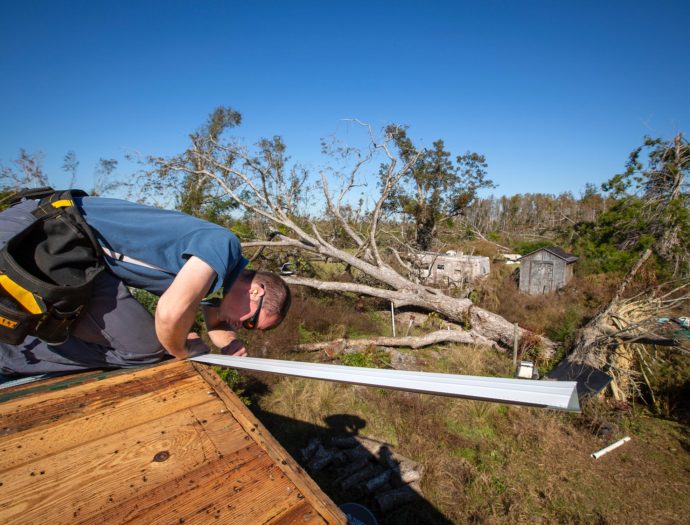
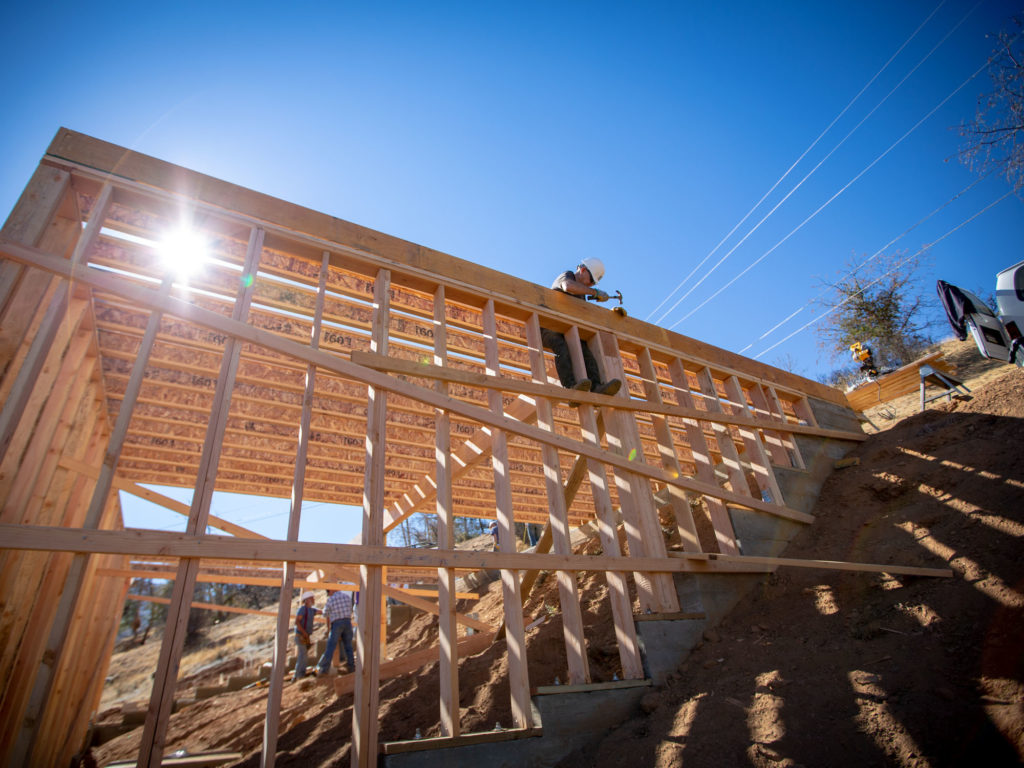
After a wildfire, there is often nothing left. Unlike other disasters, recovery from a wildfire usually involves building new homes rather than repairing damaged ones. Fire recovery can be prolonged due to the wait time for safe access into the fire-stricken areas.
MDS volunteers play an important role in not only helping build new homes but also in listening to the stories of fire survivors in the local community.
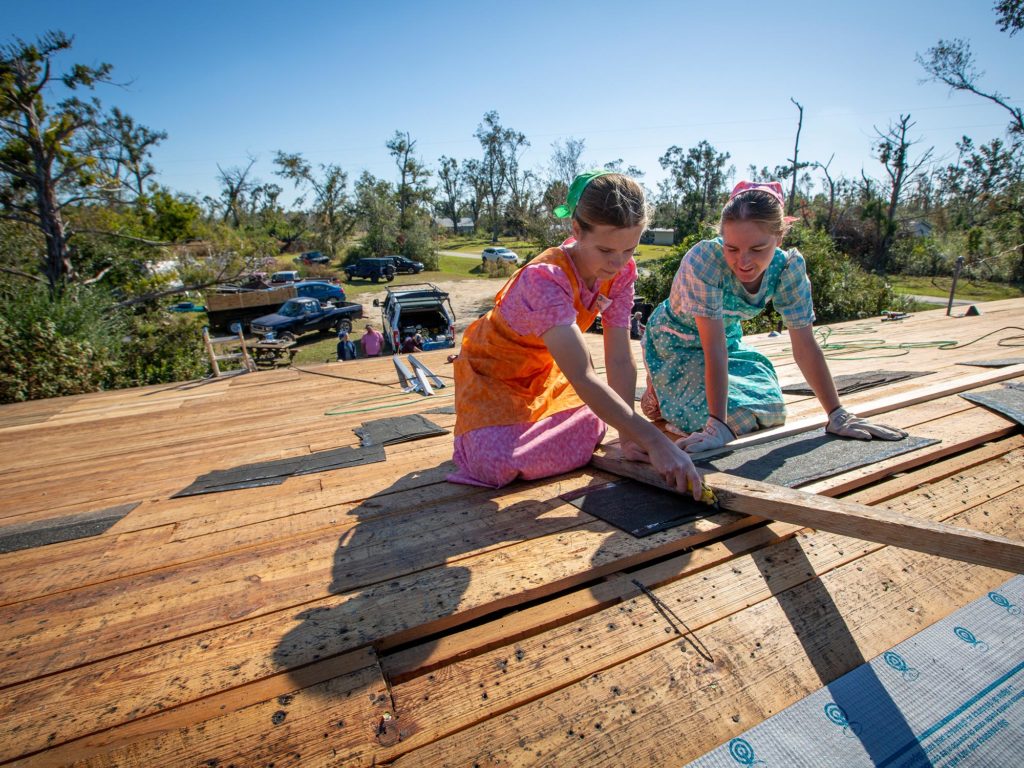
Hurricanes may cause damage in a wide swath, crossing entire regions, spawning flooding, spinning off tornadoes, and leaving people without power for weeks. Considering there are thousands of people affected, how does MDS decide who to help?
First, neighbors help neighbors, with MDS Early Response Teams working locally to help people muck out, remove debris, and cut downed trees. Then, MDS works with long-term recovery committees to determine who is most in need of home repairs or rebuilds. Hurricane recovery can take years, and MDS is there to help for the long haul.
Learn More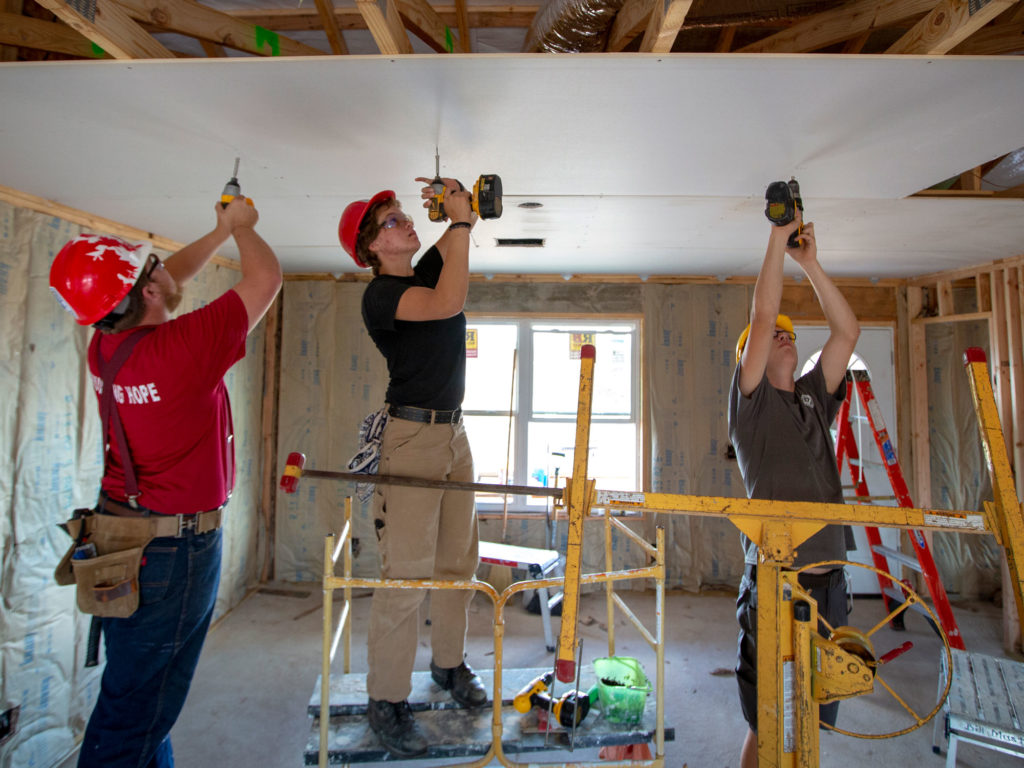
Causing extreme local damage and trauma, tornadoes often block roads and topple power lines. MDS works with local emergency management officials to ensure it’s safe to access the disaster area, then begins to help residents clear debris and repair their homes. Over the long term, MDS volunteers may build new homes for tornado survivors as well.
An important part of MDS’s work is disaster mitigation: MDS also builds tornado shelters in storm-vulnerable areas, ensuring residents are safer and more disaster-resilient in the future.
Learn More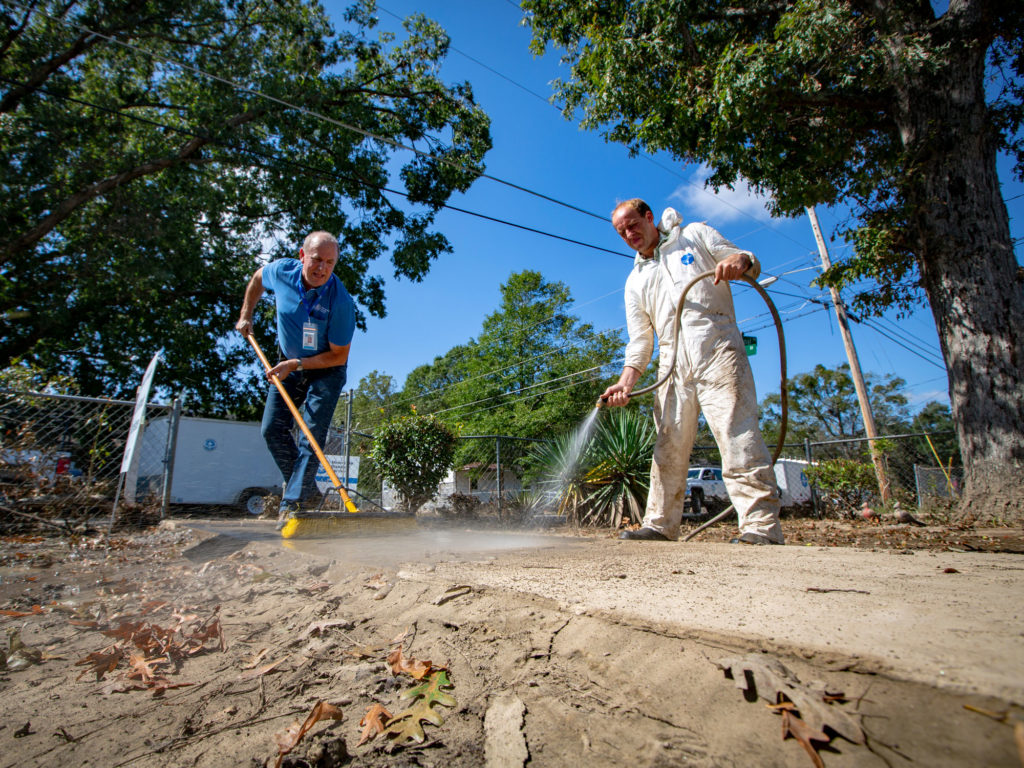
MDS volunteers are well-versed in removing soggy carpets, knocking down warped drywall, and ensuring mold doesn’t grow before repairing a flood-damaged home. In every stage of flood recovery—from mucking out to building new homes—MDS volunteers use a wide set of skills.
Learn More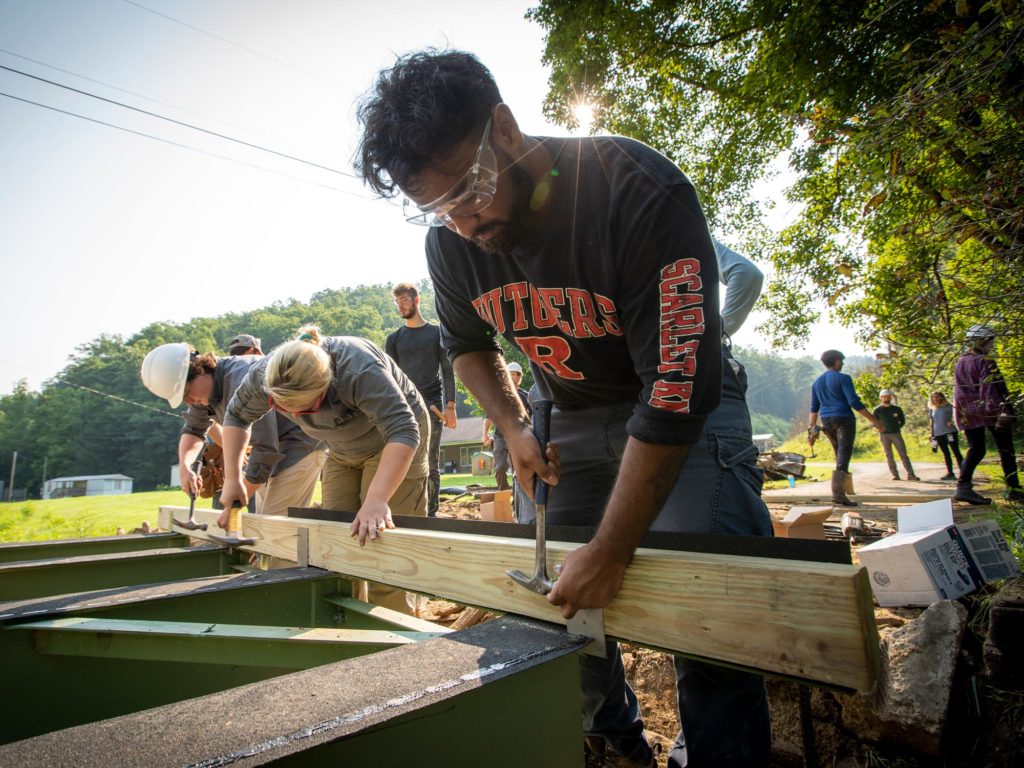
In addition to these major disasters, MDS also responds to assist those who are vulnerable and do not otherwise have means to recover. Recent examples of these other responses include drought relief for struggling farmers, repairing plumbing damage after ice storms, and rebuilding private access bridges washed out by creek flooding.
MDS also provides volunteer labor and skills to assist other non-profit service agencies to repair or renovate their buildings, such as shelters for homeless people, for women in need of safe accommodation, and for legal asylum seekers who need a temporary home. During the pandemic, which was a disaster for many in different ways, MDS assisted congregations in Canada and the U.S. to meet needs in their communities. In Canada, MDS works with organizations assisting Indigenous people who are still coping with the disaster of 150 yeas of residential schools.
Learn More